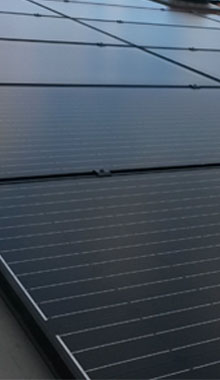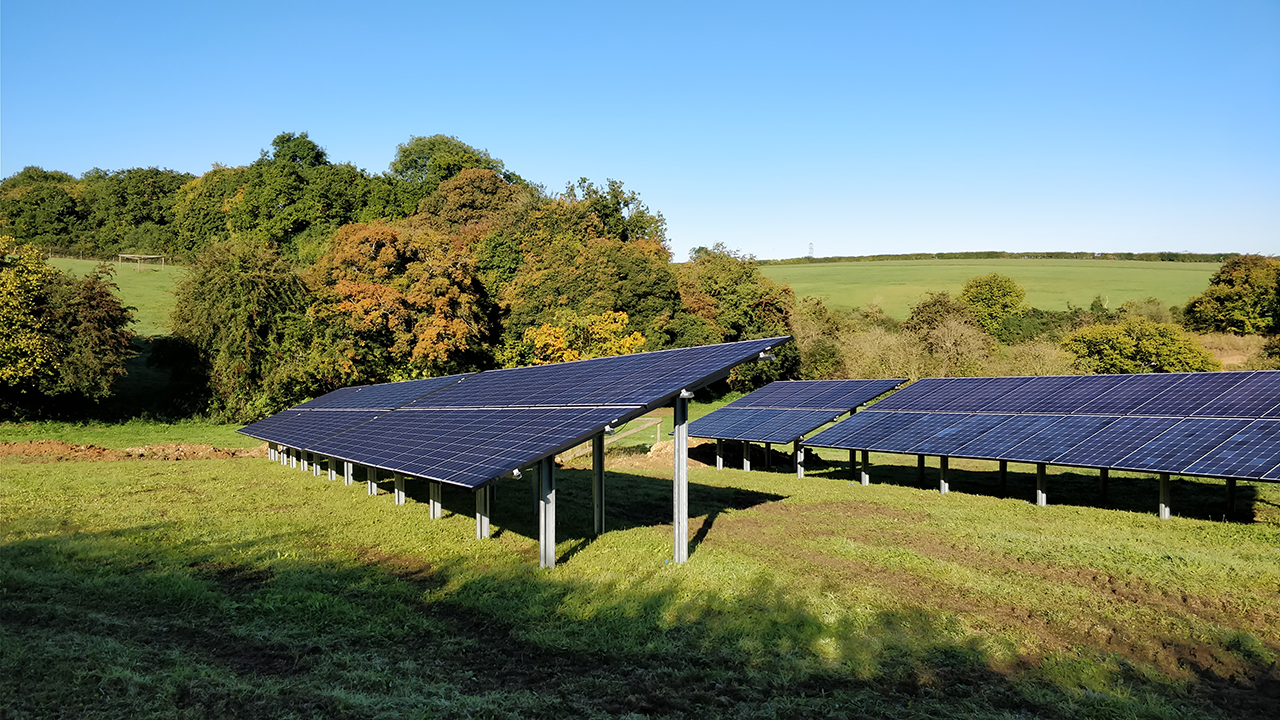Overview
 A solar PV system is made up of flat plate panels that have very thin layers of silicon. When the Sun’s radiation hits the PV panels, they convert this solar energy into DC electricity. An inverter then converts this into AC electricity which is suitable for home appliances and export to the national grid.
A solar PV system is made up of flat plate panels that have very thin layers of silicon. When the Sun’s radiation hits the PV panels, they convert this solar energy into DC electricity. An inverter then converts this into AC electricity which is suitable for home appliances and export to the national grid.
Isoenergy are MCS accredited Solar Thermal and Solar Photovoltaic installation specialists.
We work with schools, councils, housing associations, developers, architects as well as domestic consumers. We always provide a bespoke solution compatible with the Smart Export Guarantee.
Here at isoenergy we continue to invest heavily into the research and development of renewable energy solutions and continue to test solar technology at our head office. We believe in the value of research to ensure we supply market leading products and provide our customers with unrivalled expertise.
How it works
Solar Photovoltaic systems capture the energy of the Sun using PV cells to convert sunlight into electricity. To do this, they have to be mounted facing the path of the Sun. Typically, this is on a roof, but can also be ground mounted. You can read more about solar PV mounting options.
The PV panels produce Direct Current (DC) electricity which is fed directly from the panels to an inverter. The inverter converts the DC current to Alternating Current (AC). This current is used by appliances and lighting for all the property's needs. When you are using electricity in the house (watching TV for example) it will flow directly into appliances; which can be topped up by additional electricity from the national grid. If you are not using the electricity, then it can flow into the national grid, so someone else can use it.
The capacity of a PV cell is measured in kilowatt peak (kWp) which is the theoretical maximum power that the panels generate in maximum direct sunlight and perfect conditions.
At Isoenergy we are not tied to any manufacturers and therefore can advise clients on new technologies and what system would be the best for them.
Savings and Payments
The Government's Feed-in Tariffs (FiTs) scheme, which enabled homeowners to get paid for generating electricity via solar panels, closed to new applicants in March 2019 however this has since been replaced by the Smart Export Guarantee (SEG) scheme which obliges electricity suppliers with at least 150,000 customers to offer a payment for any electricity generated by a solar PV system and export to the grid. The exact value of the payment varies depending on the supplier however it is normally less than the cost of importing electricity from the grid which is why, in order to make the most from a solar PV system, you want to try and use as much of the electricity onsite as possible. In order to be eligible for the SEG the system has to be installed by an MCS accredited installer such as isoenergy.
Considerations
Location
Solar PV systems depend on sunlight falling on the panels to generate electricity. Direct sunlight will generate four or five times more power than indirect or scattered sunlight. Therefore the ideal location for a PV array faces south and is tilted at about 40° to 50° above the horizontal.
The higher the Sun is in the sky and the less cloudy the climate, the more power will be generated. This means that the generation varies across the country and according to the seasons. The generation in winter will be much less than in summer.
The difference in performance of solar panels according to whether the light is direct or indirect means that shading from trees, chimneys or other roofs can have a significant impact on the performance of the system. Isoenergy will always perform a shading assessment as part of our works to ensure the predictions on how much energy your system will create are a accurate as possible.
Planning permission
In many areas roof-mounted PV systems are permitted development and do not need specific planning permission. This is unlikely to be the case if you live in a conservation area or a listed property. A ground-mounted PV system, detached from the house, will almost certainly need planning permission.
Available electrical supply
The electrical regulations mean that small PV systems up to 4kW on a single phase or 10kW on a three-phase supply are regulated with a light touch and do not need prior approval from the electricity network operator. Systems larger than this will require approval before work starts. Approval cannot be guaranteed and there may be a cost to upgrading the network to allow a system of the size requested. It is very likely that larger systems will only be permitted where there is a three-phase supply.
Structural considerations
It is important to check that any roof that will be used for mounting solar panels is able to take the additional weight and the potential wind loads that the panels will cause. In some cases this may require an assessment by a structural engineer.
Battery storage
If the property’s electricity usage is low during the day, when the panels are generating the most, it is possible to install a battery storage system to hold on to the energy for when you need it in the evening.
Gallery








